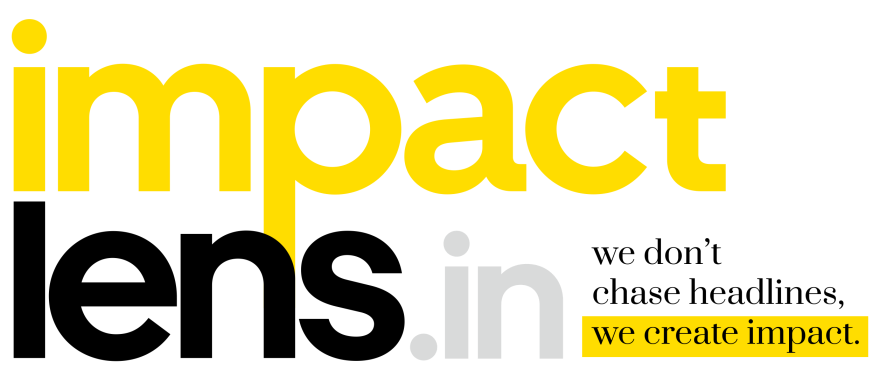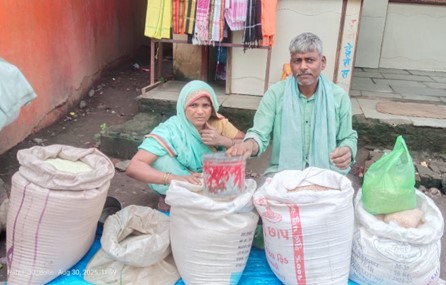By Vikas Mhaske, Manager, WASH
Social change becomes stronger and faster when the public sector, private sector, and civil society come together and work toward a common goal. One such goal is ensuring the well being and development of children-the foundation of any progressive society.
To help children grow into healthy, responsible, independent and productive young adults, it is essential to provide safe, supportive, and inspiring learning environments. With this vision in mind, CIE India, in collaboration with Centre for Youth Development and Activities (CYDA), is implementing the UTKRASH2 initiative under the Green and Sustainable School model. The initiative aims to create a school environment that nurtures both personal growth and environmental awareness. Students are encouraged to understand sustainability, take responsibility for their surroundings, and adopt eco-friendly habits in their daily lives.
Pangara is a rural and socially disadvantaged village in Paithan Taluka, Chhatrapati Sambhajinagar District. The Zilla Parishad Primary School, which has 170 students (90 girls and 80 boys), faced many basic challenges. The school faced a severe shortage of clean drinking water, unhygienic surroundings, and poor sanitation practices. The lack of trees around the campus added to the discomfort, making the environment hot and unwelcoming, especially during summer months. Students were not aware of environmental issues like pollution, water conservation, or the importance of trees. The school also had to pay a monthly electricity bill of ₹370. Health and hygiene practices, such as hand washing and cleanliness, were lacking. Many students lacked essential items such as notebooks, pens, school bags, and shoes, which negatively impacted their learning and overall growth.
1. Sanitation Material Distribution: Creating a Culture of Cleanliness
The school received necessary cleaning supplies, including brooms, wipers, phenyl, gloves, masks, and dustbins. These materials helped establish a system of regular cleaning. Cleanliness drives involving students have become a regular part of school activities. Children are now developing habits of personal hygiene, responsibility, and teamwork. The school campus is visibly cleaner and more pleasant. Most importantly, there has been a noticeable drop in illness among students. A healthier environment has improved student attendance, focus, and class participation.

2. Educational Material Distribution: Dignity and Joy in Learning
Many children came to school without basic supplies, such as notebooks, pens, school bags, shoes, or even proper uniforms. This affected their confidence, attendance, and learning ability. The initiative distributed educational kits, including school bags, notebooks, pens, pencils, compass boxes, crayons, and shoes, to all students. The results were immediate. Students began attending school regularly, showing more interest in learning, and engaging better with classroom activities. Their self-esteem improved. Families from low-income backgrounds also expressed relief, as the financial burden of school materials was significantly reduced. Teachers have reported improved academic performance and participation.
3. Miyawaki Dense Forest: Breathing Life into the campus
The school grounds were barren, dusty, and lifeless. With hardly any trees, the environment was hot and uninviting, especially in summer. A Miyawaki Dense Forest was developed using scientific techniques. In a 1guntha (approximately 1,000 sq. ft.) area, 322 native saplings were planted in a 1×1 meter grid. The soil was ploughed, composted, and treated with anti-fungal agents before planting to ensure high survival and fast growth. Within months, the dry space turned into a lush, green forest patch. Temperatures around the school have become noticeably cooler, and the greenery has attracted birds, butterflies, and insects-bringing biodiversity back to the area. Students now spend time in this natural space, learning about plants, the ecosystem, and their role in protecting the environment.

Ecological Benefits:
- The 322 trees, once mature, are estimated to produce up to 46,000 kg of oxygen annually-enough to support more than 230 people per year.
- They can absorb approximately 6–8 tons of carbon dioxide per year, helping to offset local pollution.
- The soil retains more moisture, and rainwater percolation has improved, which also supports groundwater recharge.
4. Solar Rooftop Off – Grid System: Powering Education Sustainably
The school paid ₹370 per month in electricity bills-a significant amount for a rural school with limited funding. A solar rooftop off grid system was installed. It includes solar panels, an inverter, 200AH batteries, and a mounting structure to run basic school needs. The school’s electricity bill has now dropped to zero. Savings can now be used for educational or developmental purposes. Students have been introduced to the concept of renewable energy, and many now understand how solar power works. The school proudly stands as a “Zero Energy Bill” institution and a champion of energy literacy in the region.

5. Rooftop Rainwater Harvesting with Borewell Recharge: Securing Water for All Seasons
Water shortages, particularly during the summer and post monsoon periods, disrupted school activities and caused significant inconvenience to students and staff. A Rooftop Rainwater Harvesting System was installed to collect water from the school’s 5,181.12 sq. ft. roof. The harvested water is filtered and used to recharge the school borewell. The school now has year round access to water for drinking and utility purposes. The groundwater level has improved, and students are learning firsthand about the importance of water conservation. The system has the capacity to harvest up to 317,970 litres of water annually, making the school water resilient and climate ready.

A Model for Rural School Transformation
From dusty grounds and dry taps to green corners, clean classrooms, and zero energy bills-Z.P. Primary School Pangara is no longer just a place for learning. It has become a symbol of sustainability and innovation in rural education. The UTKRASH2 initiative has not only improved infrastructure but also planted deep roots of awareness, ownership, and responsibility in the hearts of young students. The school now stands as a model of what is possible when thoughtful interventions, community engagement, and vision come together.


